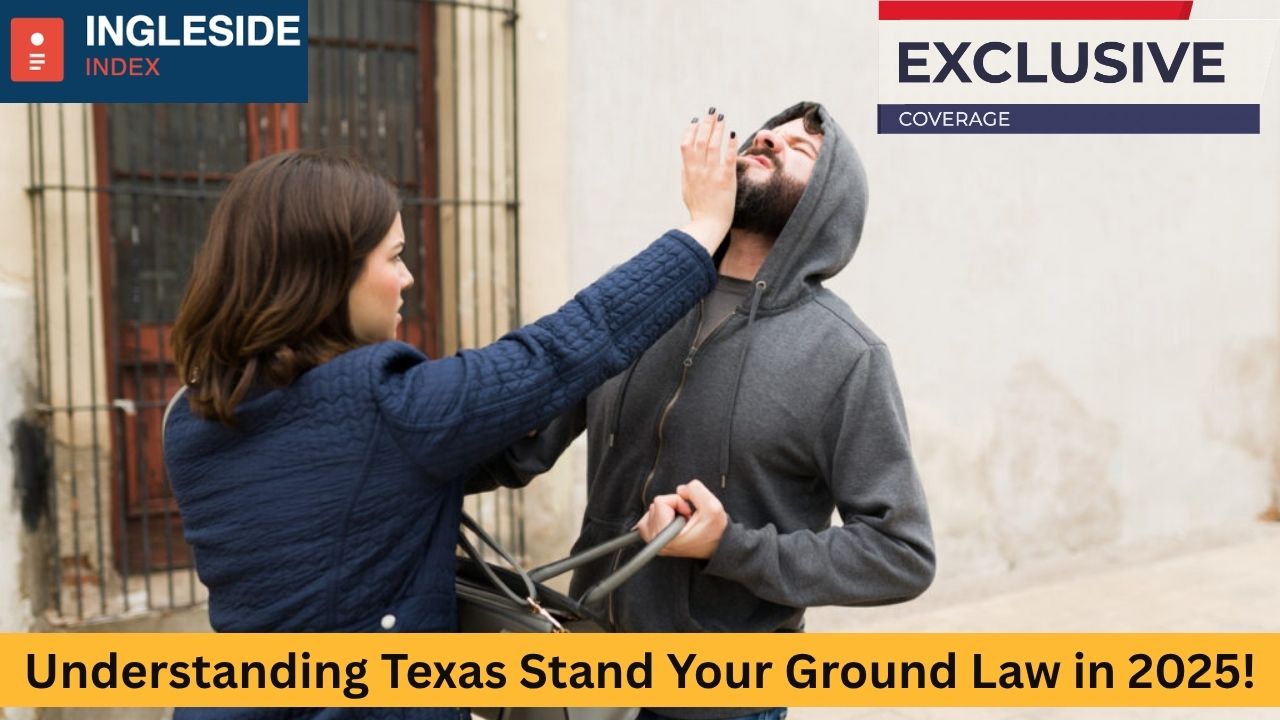In recent years, discussions about self-defense laws have surged across the United States. At the forefront of these debates is the “Stand Your Ground” law, which allows individuals to use force, including deadly force, in self-defense without the duty to retreat under certain conditions. Texas, known for its strong stance on individual rights and firearm ownership, upholds one of the most robust versions of this law. In 2025, as the legal and political climate evolves, it’s crucial for Texans—and visitors—to fully understand what Stand Your Ground means, how it’s applied, and what real-life implications it carries.
This article explores the updated status of Texas’s Stand Your Ground law in 2025, analyzes its impact on major cities like Houston, Dallas, San Antonio, and El Paso, and provides insights into how residents can navigate self-defense laws with caution and awareness.
What Is the Stand Your Ground Law?
Stand Your Ground laws remove the duty to retreat before using force in self-defense, particularly when a person is in a place they have a legal right to be. Unlike traditional self-defense doctrines that may require retreat if safely possible, Stand Your Ground empowers individuals to “stand their ground” and defend themselves using reasonable, and sometimes deadly, force when facing imminent threats.
Texas law supports this principle under the Texas Penal Code, specifically Chapter 9, which deals with the justification of force and deadly force. The state does not require an individual to retreat before using force if:
-
They are in a place they have a legal right to be,
-
They are not engaged in criminal activity at the time,
-
They have not provoked the person against whom force is used.
This legal doctrine becomes critical in cases involving break-ins, assaults, carjackings, and other threats to personal safety.
Key Features of Texas’s Stand Your Ground Law
No Duty to Retreat
Texas does not impose a duty to retreat from a threat if the individual is legally present and not engaged in criminal activity.
Castle Doctrine Extension
Texas extends the Castle Doctrine, which presumes justification in using deadly force to defend oneself in their home, to include occupied vehicles and workplaces.
Presumption of Reasonableness
If someone unlawfully and forcefully enters your home, car, or business, the law presumes that your use of force is reasonable.
Legal Right to Be There
The law applies only if the defender was in a location they had the legal right to occupy—such as their home, workplace, or public space.
Protection from Civil Liability
Individuals who act in accordance with the law are typically protected from civil lawsuits resulting from their use of force.
Historical Background and Evolution
The Stand Your Ground law in Texas is an evolution of traditional self-defense principles that have existed for centuries. Initially, self-defense was only justified if a person attempted to retreat or avoid the confrontation. Texas began expanding these rights in 1995, when the state passed laws that strongly supported individual gun ownership and home defense.
The 2007 Castle Doctrine Bill significantly broadened the scope of self-defense. It removed the duty to retreat in specific places and introduced presumptions that favor the defender. By 2025, the law has remained largely intact but continues to face public and legal scrutiny—especially following high-profile cases that make national headlines.
How the Law Works in Real-Life Situations
Let’s look at some scenarios to better understand how the law applies across Texas cities:
Houston (Harris County):
In one case from 2024, a Houston resident used deadly force against an intruder attempting to enter their garage at night. The homeowner was not charged, as the use of deadly force was considered justified under both the Stand Your Ground and Castle Doctrine laws. Harris County law enforcement emphasized that the garage, though detached, was part of the residence.
Austin (Travis County):
A more complicated scenario occurred in a public park. A man felt threatened during a heated confrontation and pulled a firearm, shooting the other individual. Here, investigators had to determine whether the shooter provoked the conflict and whether the threat was imminent. Travis County District Attorney’s office later decided not to file charges, citing Stand Your Ground protections, though the community debate persisted for months.
Dallas (Dallas County):
A road rage incident in 2023 turned fatal when one driver exited their vehicle and aggressively approached another. The armed driver shot and killed the aggressor. Dallas Police ruled the shooter acted within the law, although civil litigation was pursued by the victim’s family.
El Paso (El Paso County):
A store owner defended himself during a late-night burglary. Surveillance footage showed an intruder breaking in, and the owner used a licensed firearm. Police and prosecutors ruled it a clear-cut case of self-defense under the Stand Your Ground law.
These examples underscore how geography, evidence, and context can all influence the application of the law.
The Role of Law Enforcement and Prosecutors
Law enforcement agencies across Texas vary in how aggressively they pursue cases involving Stand Your Ground claims. While the law provides significant protection, it’s ultimately up to investigators and prosecutors to determine:
-
Whether the use of force was justified,
-
If the threat was imminent and credible,
-
Whether the person invoking self-defense was the initial aggressor,
-
If the person was lawfully present and not involved in criminal activity.
For example, in Fort Worth, Tarrant County law enforcement has implemented special training modules for officers to better assess Stand Your Ground scenarios. These modules include de-escalation tactics, bodycam evidence review, and community transparency to prevent unnecessary use of force.
Statistics on Self-Defense Claims in Texas
In recent years, self-defense claims under the Stand Your Ground law have increased. According to data from the Texas Department of Public Safety and other local law enforcement databases:
-
From 2018 to 2023, Texas saw a 24% increase in Stand Your Ground-related self-defense claims.
-
Approximately 68% of these cases occurred in urban or suburban areas, including Houston, Dallas, and San Antonio.
-
Over 82% of justifiable homicide cases involved firearms, with handguns being the most common weapon.
-
About 40% of all justifiable shootings occurred in or around vehicles, indicating the growing relevance of the law in road rage and carjacking scenarios.
By 2025, more counties are expected to track and publish data related to Stand Your Ground cases for public awareness and transparency.
Critics and Controversies
Despite its legal protections, the law is not without controversy. Critics argue that Stand Your Ground disproportionately impacts minority communities and encourages escalation rather than de-escalation. Some advocacy groups and civil rights organizations claim:
-
The law may be applied inconsistently across racial and economic lines,
-
It can be used to justify avoidable violence,
-
It may embolden individuals to take aggressive action rather than calling law enforcement.
In cities like San Antonio and Austin, protests have erupted following controversial shootings where Stand Your Ground was cited. Civil rights groups have called for tighter definitions and limitations, including mandatory independent investigations in every case involving a death.
How to Legally Protect Yourself in Texas
While the Stand Your Ground law offers protections, it’s essential that individuals act responsibly. Here are steps every Texan should consider:
Know Your Rights and Limits
Understand that just because you can use force doesn’t mean you should. If there’s a safe way to de-escalate, it’s always best.
Secure a License to Carry (LTC)
Even though Texas allows permitless carry, obtaining an LTC can provide additional legal safeguards and better understanding of firearm laws.
Avoid Provoking Confrontations
If you initiate the conflict or threaten others, you may lose the protection of the Stand Your Ground law.
Invest in Security Measures
Especially in homes and businesses, invest in cameras, alarms, and barriers. These provide evidence and may help avoid confrontation entirely.
Consult Legal Counsel
If you’re ever involved in a self-defense situation, contact an attorney immediately. What you say to law enforcement can significantly affect your case.
Community Training and Education Programs
Recognizing the importance of public awareness, several cities in Texas have launched community programs:
-
Houston’s “Safe Defenders” Initiative offers residents free workshops on conflict resolution, firearm safety, and self-defense law.
-
Dallas’s Justice & Safety Coalition hosts quarterly town halls where attorneys and law enforcement officials explain how the law works in real life.
-
Austin Police Department’s Civilian Academy now includes a module on the limits of Stand Your Ground and de-escalation tactics.
-
Corpus Christi has partnered with legal nonprofits to provide legal aid to residents facing Stand Your Ground-related cases.
These programs aim to reduce misunderstandings and prevent unnecessary violence.
Stand Your Ground and Minors
As of 2025, Texas law does not explicitly grant Stand Your Ground rights to minors, though the law does not exclude them either. Minors who act in self-defense may still be protected under general self-defense principles, but the context—such as age, maturity, and setting—plays a larger role in prosecution decisions.
In several cities like Lubbock and Waco, juvenile court judges have noted an uptick in cases where teens cite self-defense in school altercations or neighborhood disputes. Lawmakers are under increasing pressure to define clearer boundaries when it comes to minors and self-defense laws.
Future of Stand Your Ground in Texas
With ongoing debates and legislative pressure, it’s possible Texas may revisit elements of its Stand Your Ground law. Proposals being discussed as of mid-2025 include:
-
Requiring independent investigation panels for any Stand Your Ground-related homicide,
-
Mandating bodycam usage and public release in police reviews,
-
Clarifying the definition of “imminent threat” and “provocation” in the statute.
While the core law is unlikely to be repealed, refinements may be introduced to reduce abuse, enhance fairness, and restore community trust.
Conclusion
Texas’s Stand Your Ground law is a powerful legal tool designed to protect citizens from unlawful threats. But with great power comes great responsibility. As cases continue to unfold across Houston, Austin, Dallas, and beyond, it’s clear that while the law grants the right to defend, it also demands careful judgment, awareness, and accountability.
In 2025, every Texan should take time to understand how the law works, what it permits, and how to act wisely during confrontations. Whether you’re a homeowner in Plano, a business owner in Laredo, or a driver navigating San Antonio streets, knowing the law could save not only your life—but your future.




